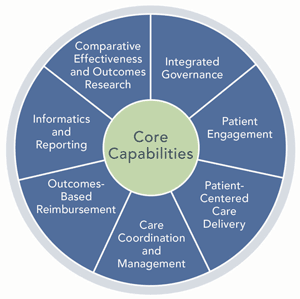
The Congressional Budget Office (CBO) and The Joint Committee on Taxation (JCT) released updated estimates of the cost of the Affordable Care Act (ACA) this month.[1] The update is typical for this time of year and includes a new 10-year period (2012–2022 in this case). The new report includes both ACA and healthcare provisions from the Health Care and Education Reconciliation Act of 2010, for a more comprehensive view on insurance coverage estimates.
The updated net cost estimates, $1.1 trillion for 2012–2022, are approximately $50 billion less than the March 2011 estimate. Changes have been made to both revenue and expenses, driven by many factors (e.g., new legislation; updated economic outlook, insurance coverage trends, and assumptions). The biggest adjustment is in the additional costs associated with Medicaid, CHIP outlays, or $168 billion in incremental costs, arising primarily from the additional year of implementation (of 2022).
If the $168 billion in incremental insurance coverage costs is an indication, the net costs of ACA from 2023 and beyond is likely to be much higher than original estimates. It is difficult to say whether cost reduction efforts will offset incremental insurance coverage costs from 2023 and beyond, but this certainly is an area to watch.
The table below summarizes the differences between the March 2011 and 2012 estimates for 2012–2022, as well as the source of those changes.[2]
| Source of Change | March 2011 Estimates[3] | March 2012 Estimates[3] | Difference[3] |
| Medicaid and CHIP Outlays | $627 | $795 | $168 |
| Exchange Subsidies and Related Spending | 777 | 681 | (97) |
| Small Employer Tax Credits | 41 | 21 | (20) |
| Gross Cost of Coverage Provisions | $1,445 | $1,496 | $51 |
| Penalty Payments by Uninsured Individuals | (34) | (45) | (11) |
| Penalty Payments by Employers | (81) | (96) | (15) |
| Excise Tax on High-Premium Insurance Plans | (87) | (79) | 8 |
| Other Tax Revenues and Outlays | (113) | (193) | (81) |
| Net Cost of Coverage Provisions | $1,131 | $1,083 | $(48) |
NOTE: Figures may not be exact due to rounding.
The net impact of ACA on total costs for 2012–2022 has not changed from the March 30, 2011, update, which essentially estimates that ACA will result in a net decrease in federal healthcare spending of $210 billion [4]. However, updates will likely be forthcoming from at least the CBO, if not the JCT, as well, after the CBO’s assessment of the proposed FY 2013 budget from the Obama administration.
Implications
Most industry leaders believe that changes in legislation and political leaders are less important than the macro reality of unsustainable healthcare spending. The actual mechanics of how this is addressed from a policy perspective will continue to evolve. We do expect that more mechanisms will be put in place to reduce federal healthcare spending in the next decade, and maybe the subsequent decade, as well.
Healthcare providers that will thrive in the new economy will have a laser focus on cost-effective care delivery and value. Successful providers will not overspend in any one area. At the same time, they will be instrumental in creating a culture of value that is pervasive throughout their organizations – so much so that patients will choose them for their healthcare needs.
ECG believes that systems able to develop excellence in core capabilities will be successful in any future scenario. Core capabilities are shown in the graphic below.

Footnotes
2. Ibid.
3. All dollar amounts are in billions.

